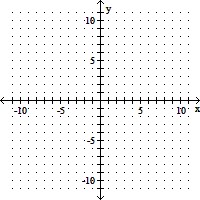Solve the problem.The length of a rectangle is 6 inches more than its width. If 3 inches are taken from the length and added to the width, the figure becomes a square with an area of 289 square inches. What are the dimensions of the original figure?
A. 14 in. by 17 in.
B. 11 in. by 17 in.
C. 17 in. by 17 in.
D. 14 in. by 20 in.
Answer: D
You might also like to view...
Solve. Express the result in scientific notation. Round to the nearest hundredth, if necessary.During a science experiment you find that the correct answer is 5.68 × 106. If you mistakenly write the answer as 4.68 × 106, by how much is your answer off?
A. 100,000,000 B. 5,680,000 C. 1,000,000 D. 100,000
Graph the equation. Identify the coordinates of the vertex.y = -x2 + 2x + 3
A. (1, 4) B. (- 1, - 4) C. (- 1, 4) D. (1, - 4)
Identify the given number as "Rational", "Irrational", or "Not a real number". If the number is rational, give its exact value. If the number is irrational, give a decimal approximation to the nearest thousandth.
A. Rational, 5 B. Not a real number C. Rational, 12.500 D. Irrational, 12.500
Use properties of limits to find the indicated limit. It may be necessary to rewrite an expression before limit properties can be applied. x
x
A. 1 B. -8 C. 8 D. 0